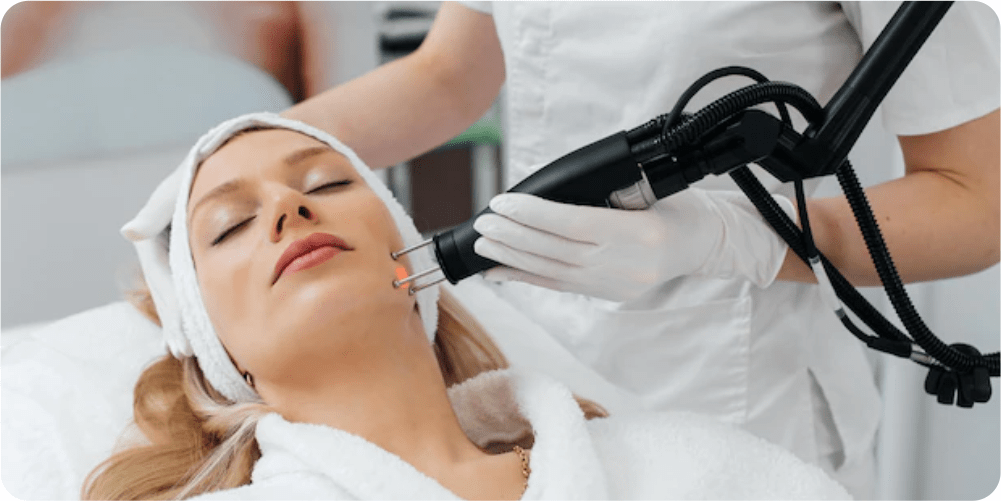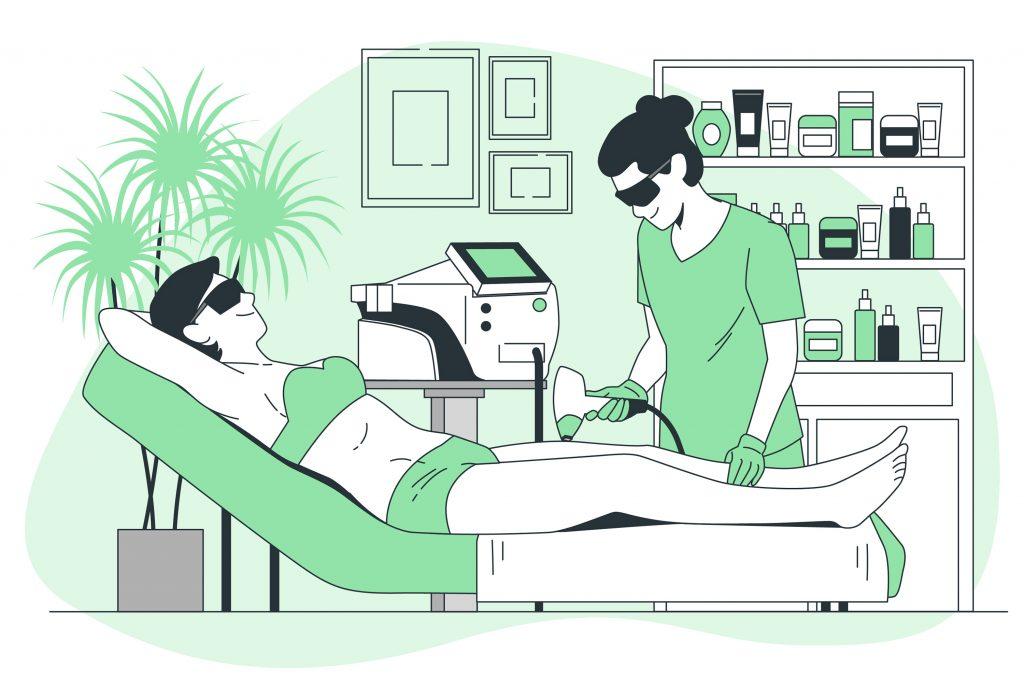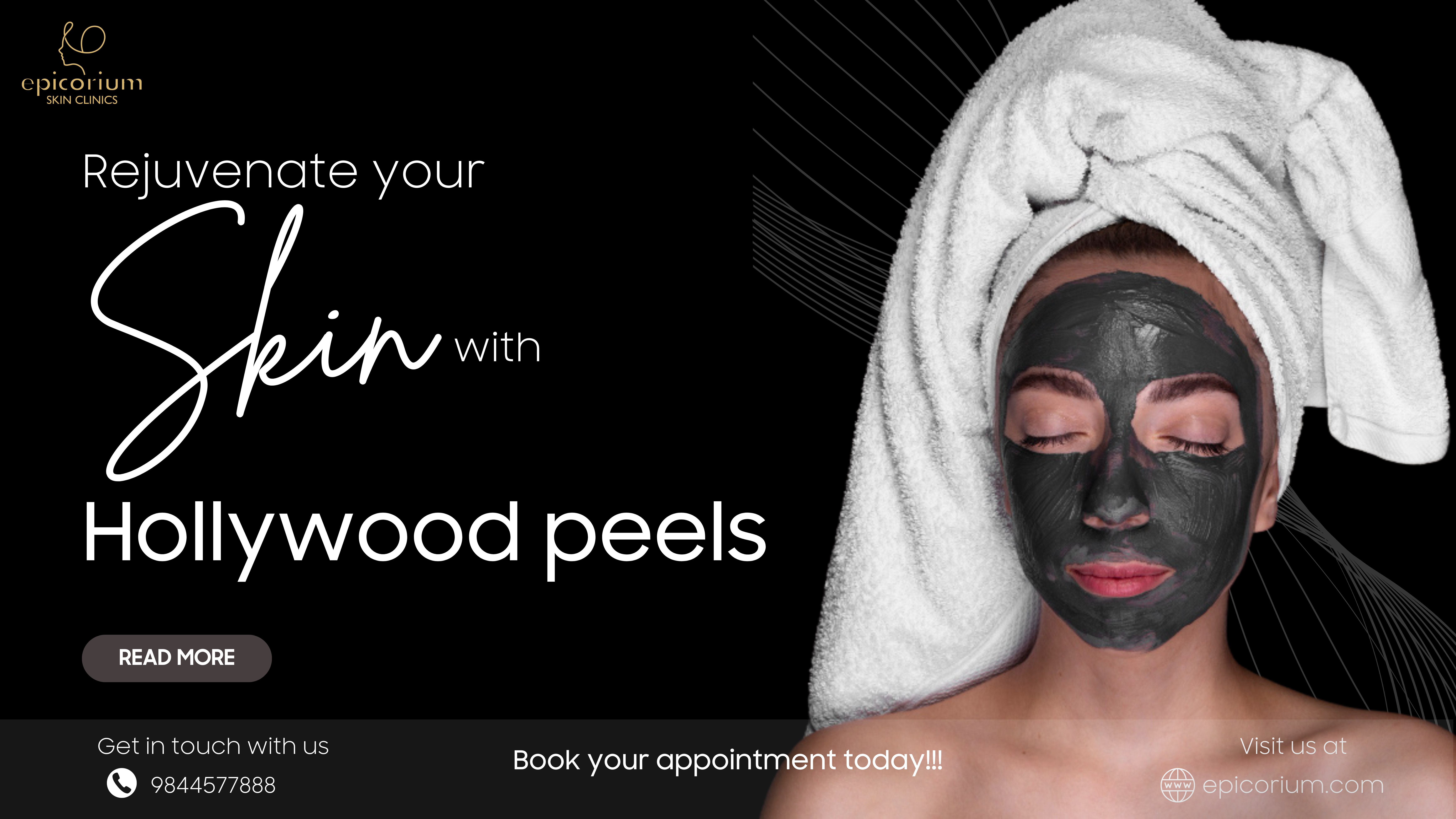
Laser Resurfacing And Toning For Better Skin
With CO2 Laser Resurfacing, you can reverse the effects of aging, hyperpigmentation, and other undesirable skin conditions, all without having to undergo any plastic surgery or invasive procedures.

Laser Resurfacing is used to treat which concerns?
CO2 laser resurfacing has been used successfully to treat wrinkles and scars, and other benign growths of the skin, such as warts, birthmarks, rhinophyma (enlarged oil glands on the nose), and other skin conditions. CO2 Laser Skin Resurfacing is used to treat common aging-related skin conditions, such as fine wrinkles, age spots, sun damage, enlarged oil glands, mild to moderate acne scars, and other, more serious, skin abnormalities.
What are the results of Laser Resurfacing?
Read MoreLaser Resurfacing And Toning For Better Skin
With CO2 Laser Resurfacing, you can reverse the effects of aging, hyperpigmentation, and other undesirable skin conditions, all without having to undergo any plastic surgery or invasive procedures.

Laser Resurfacing is used to treat which concerns?
CO2 laser resurfacing has been used successfully to treat wrinkles and scars, and other benign growths of the skin, such as warts, birthmarks, rhinophyma (enlarged oil glands on the nose), and other skin conditions. CO2 Laser Skin Resurfacing is used to treat common aging-related skin conditions, such as fine wrinkles, age spots, sun damage, enlarged oil glands, mild to moderate acne scars, and other, more serious, skin abnormalities.
What are the results of Laser Resurfacing?
New sun damage may change the results of the laser skin resurfacing, causing even more lines, wrinkles, and pigmentation irregularities. Laser skin resurfacing requires different healing times depending on the laser type used – and is effective at treating lines and facial wrinkles, acne scarring, and pigmentation irregularities. Tanning may make laser skin resurfacing less effective and more uncomfortable since darker-pigmented cells will absorb more laser energy as heat.
Laser skin resurfacing improves how your skin is draped, which may have positive effects on your facial contours as well as your complexion. If aging, acne, or excessive time in the sun has left you with mottled, scarred, wrinkled, or lined faces, laser skin resurfacing could help you keep your skin looking youthful and healthy.
How does the procedure of laser resurfacing take place?
Non-ablative lasers do not remove any skin but rather treat conditions like spider veins, Rosacea, and medical conditions related to acne with pulsed light, pulsed dye, or fractional lasers. Ablative laser resurfacing offers more dramatic results, but it may result in more side effects, including pain and damage to the skin.
Laser skin resurfacing uses ablative lasers to remove the outer layers of your skin, improving texture and appearance. Laser skin resurfacing uses lasers to lessen the appearance of lines and scars, even skin coloration (pigmentation), tighten the skin, and remove lesions, whether they are benign (non-cancerous) or malignant. Laser treatments improve the texture and tone of skin, decrease the number of wrinkles and acne scars, and encourage a healthier-looking, more radiant complexion. Fractional Laser Technology delivers specialized pulses of energy to the skin and targets unwanted pigmentation, wrinkles, stretch marks, or scars, while not harming surrounding skin, and has the added benefit of stimulating collagen regeneration.
In addition, an intense wavelength of light stimulates your base layer skin, leading to the production of collagen and improving your fine lines. The laser’s intense heat causes only the right amount of controlled damage to the treated area. These lasers cause a uniform injury to the skin of the treated areas.
Each layer is removed one at a time, by shining the concentrated light onto an uneven patch of skin. The laser removes the upper layers of skin cells, known as the epidermis, as well as outer cells in the dermis, the second layer of the skin. At the same time, a laser beam heats up the base layer of skin (the dermis), stimulating new collagen fibers to grow.
Not only does CO2 laser strip away dead skin cells so that you have soft, silky skin, the technique stimulates the production of collagen, so that you enjoy a youthful, radiant glow. Fractionated CO2 laser treatments involve using a laser to punch multiple, narrow columns of holes deep within the layers of your skin, yet leaving the surrounding skin untouched and undamaged. The newer generation of CO2 laser facelifts uses either a very brief, pulsed light (ultra-pulsed) or a continuous light beam delivered in a sweeping pattern to remove the skin’s fine layers with very little thermal damage to surrounding structures.
Laser energy can be used to target both damaged skin on the surface and aged collagen in deeper layers of the skin. The use of lasers can target problem areas such as blackheads, acne scars, and wrinkles. While it is true that some lasers carry an increased risk of damaging cells or causing discoloration on darker skin, there are safe, effective options to get the job done. Lasers may be effective at resurfacing acne scars, but for active acne, you will want to opt for treatments using blue or blue-red lights.
FAQs
Laser skin resurfacing may be a powerfully effective treatment for many people, but those who have skin prone to scarring, are currently pregnant or nursing, or have a compromised immune system may be encouraged to consider other options.
Patients should also avoid more intense facial procedures such as deep chemical peels and microdermabrasions for at least one month prior to undergoing laser skin resurfacing, and refrain from heavy sun exposure for a few days prior to the treatment.
Depending on your particular skin condition and what type of treatment you receive, results can take time to appear, and repeated sessions may be needed, even for the more aggressive lasers. Non-ablative lasers generally do not require any downtime, whereas ablative lasers may need a healing process that lasts 2 to 3 weeks, depending on the depth, before new skin fully heals and final results become apparent.
Your skin might look red for several months after a laser treatment, but makeup can cover up any redness. During this period, except in the early days after the treatment, you may wear makeup to reduce redness. The skin can remain pink and red for months after a procedure; however, most patients are able to cover up their skin tone after approximately two weeks using makeup. Once the treatment area has healed, makeup may be worn to conceal the pink-to-red colour typically seen following laser skin resurfacing.
Dermatologists at Epicorium are well-versed in providing laser resurfacing treatment with the latest technologies used during the procedure.




